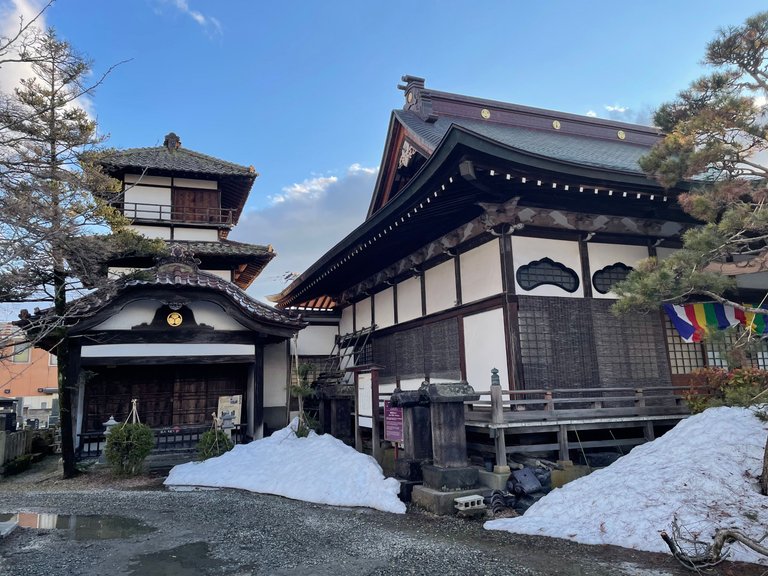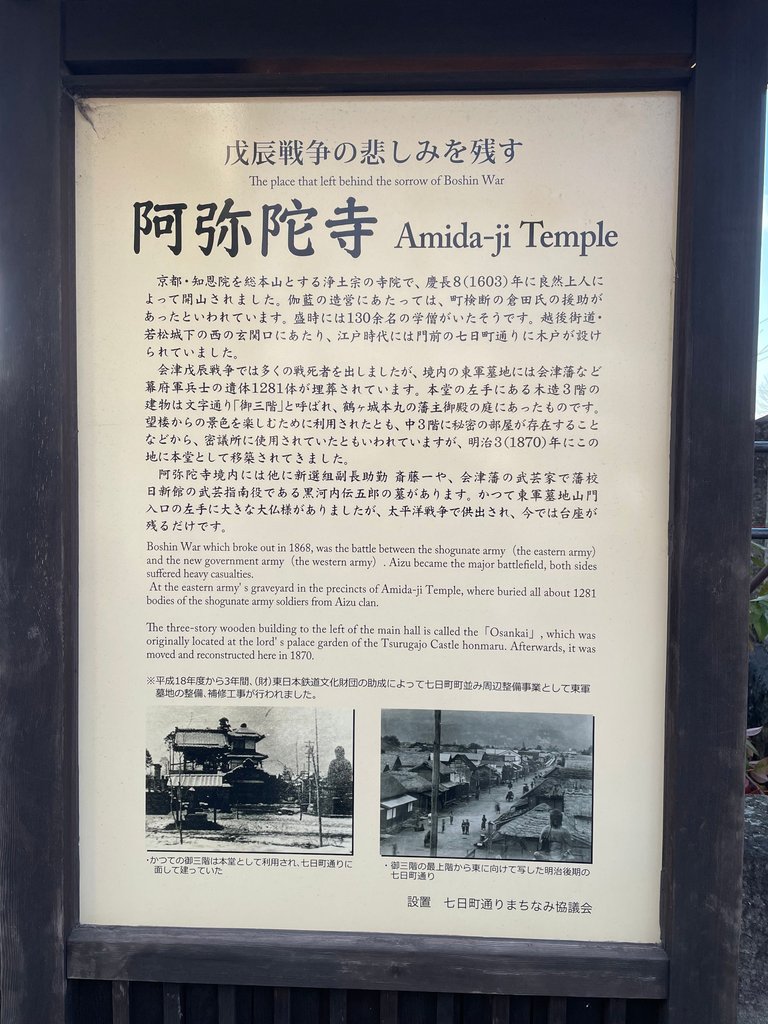戊辰戦争の悲しみを残す- Leaving behind the sorrow of the Boshin War - Aizu Impressions 👹🍣🎎 Wonderful Japan
On my walks and excursions here in the Land of the Rising Sun, I find myself stopping quite often. There is always something that catches my attention and makes me take a little extra turn. In particular, I would have to include the many smaller and larger temples and shrines that I have already visited.
And so it was on our last trip to Aizu-Wakamatsu, right in the heartland of Japan's main island of Honshu. It was already March, but winter had not yet fully left its place and was omnipresent everywhere we went.
We were out for a walk through the city and on the way we passed a small temple. As usual, I gladly accepted the invitation of the open gates and wanted to take a quick walk around the temple grounds.
The grounds consisted mainly of a few old statues and a larger main building, but like so many things here in Aizu-Wakamatsu, you could feel the breeze of history wafting around you. And it was probably this breeze that had brought us closer here.
At one point I found a board with some explanations about this place. These were mainly written in Japanese, but thanks to the latest technology, the meaning of these explanations need no longer be hidden from us.
So here we were on the grounds of Amida-ji Temple, which was presented as a place where you can leave behind the sorrows or worries of the Boshin War.
The Boshin War was a short but fierce civil war that shook the Japanese island empire around 150 years ago and led to the fall of the Tokugawa shogunate, which had ruled the country with a steady but strong hand through the Edo period. This civil war subsequently resulted in the restoration of the emperor's power and ultimately in the modernization of the country and the emergence of modern Japan,
But back to this sign. I tried to translate the Japanese for you, but you still can read the English explanations by yourself:
This is a temple of the Jodo sect with its main temple at Chion-in Temple in Kyoto and was founded by the monk Ryozen in 1603. It is said that the construction of the temple was supported by Mr. Kurata, the city inspector. At its peak, there were apparently over 130 monks learning here. It is the western gate to Echigo Kaido Castle and Wakamatsu. During the Edo period, a wooden gate was erected in front of the gate on Nanokamachi Street.
Many lives were lost in the Aizu-Boshin War, but the remains of 1,281 soldiers of the Aizu clan and other forces of the shogunate lie in the Eastern Army Cemetery on the temple grounds. The three-story wooden building to the left of the main hall is literally called “Gosankai” and was originally located in the garden of the feudal lord's palace in the main area of Tsuruga Castle. It is said that you can enjoy the view from the watchtower or that it was used as a secret meeting place, as there is a secret room on the third mezzanine floor. In 1870 (Meiji 3), this tower was moved to this location and rebuilt as the main hall.
Other tombs in the grounds of Amidaji Temple include that of Saito Hajime, deputy vice commander of the Shinsengumi, and Kurokawachi Dengorou, a martial artist of the Aizu clan and martial arts instructor at the Nisshinkan clan school. To the left of the entrance to the mountain gate of the Eastern Army Cemetery, there used to be a large Buddha statue, but it was donated during the Pacific War and only the base remains today.
Starting in 2006, construction and repair work was carried out at the Eastern Army Cemetery over a period of three years as part of the Nanokamachi Townscape and Surroundings Development Project with funds from the East Japan Railway Cultural Foundation.
There are also two small photos on the plaque, which are labeled as follows:
Left photo:
The former three-story building was used as the main hall and faced Nanokamachi Street.
Right photo:
A photo of Nanokamachi Street in the late Meiji period, looking east from the top floor of Gosankai
Well, the translation is a little rough at times, but still understandable.
The Boshin War was a long time ago, but here in Aizu-Wakamatsu it is often still all too present. The samurai history of the city is kept alive and the identity of the inhabitants of this region is based to some extent on this very history.
It is always interesting for me to learn more about this topic and I am very curious every time I am out and about in this city. Aizu Wakamatsu may not be the biggest gem in Japan, but it has become quite an interesting and attractive destination for us. And when I'm here, I like to accept invitations to come closer, as I did here that day at Amida-ji Temple...





In the thumbnail image for this post, I thought I saw ruins. I suppose, upon reflection, old structures such as the one depicted in this image could be classified as a ruin, as there's no evidence it is used for its original purpose. To me, that is brought about by the fact that it is covered in bird shit. That adds to its beauty. It reminds me that my time on Earth is nothing compared to everything that surrounds me.
That makes everything that surrounds me even more special. Thanks for sharing your images. :)
Hello maxinpower!
It's nice to let you know that your article will take 6th place.
Your post is among 15 Best articles voted 7 days ago by the @hive-lu | King Lucoin Curator by keithtaylor
You receive 🎖 0.9 unique LUBEST tokens as a reward. You can support Lu world and your curator, then he and you will receive 10x more of the winning token. There is a buyout offer waiting for him on the stock exchange. All you need to do is reblog Daily Report 683 with your winnings.
Buy Lu on the Hive-Engine exchange | World of Lu created by szejq
STOPor to resume write a wordSTART